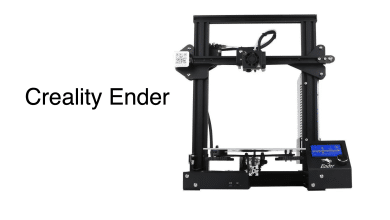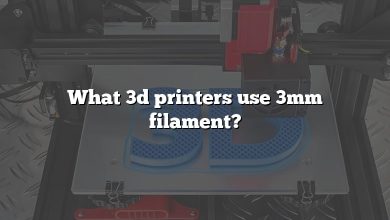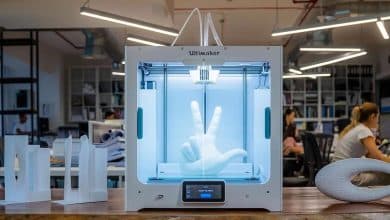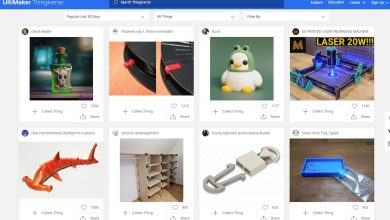3D printing has revolutionized the way we create objects, allowing us to bring our digital designs to life. However, many enthusiasts are often unsure about whether it is safe to turn off their computers while a 3D print job is in progress. In this article, we will address this common concern and provide valuable insights into the best practices for managing your computer during 3D printing. By understanding the potential risks and adopting the recommended approaches, you can ensure a smooth and successful printing experience.
Key Takeaways
- It is not recommended to turn off your computer while a 3D print job is in progress as it acts as a control hub and maintains a connection with the printer.
- Interruptions caused by shutting down or pausing the computer can lead to failed prints and data corruption.
- Use a reliable power supply, optimize power settings, monitor the print progress remotely, consider a dedicated printing computer, and frequently backup your files to minimize risks and ensure successful prints.
3D printing has become increasingly popular in recent years, allowing individuals to create three-dimensional objects with ease. However, one common question that arises among enthusiasts is whether it is safe to turn off the computer while a 3D print job is in progress. In this article, we will explore this topic and provide insights into the best practices for managing your computer during 3D printing.
Can You Turn Off Your Computer During 3D Printing?
The short answer is no; you should not turn off your computer while 3D printing. Let’s delve into the reasons behind this recommendation:
1. Computer as a Control Hub
During 3D printing, the computer acts as a control hub, sending commands to the 3D printer and ensuring the print job progresses smoothly. If you were to turn off your computer, the connection between the printer and the computer would be lost, abruptly halting the print job. This could result in wasted time, filament, and potentially a failed print.
2. Software Dependency
3D printers require specialized software, often known as slicers, to convert the 3D model into a format that the printer can understand. This software establishes a communication link between the computer and the printer. By shutting down the computer, you interrupt this communication and disrupt the printing process.
3. Data Corruption
When you turn off your computer while it is actively running a 3D print job, there is a risk of data corruption. If the computer’s power supply suddenly cuts off, it can lead to incomplete data transfer or loss of critical information required for the print job. This corruption can result in a flawed print or even damage to the printer itself.
Best Practices for Managing Your Computer During 3D Printing
To ensure a successful 3D print and maintain the integrity of your computer, consider the following best practices:
1. Reliable Power Supply
Use a reliable power supply for your computer. Investing in an uninterruptible power supply (UPS) can protect your computer from sudden power outages. In case of a power failure, the UPS provides a backup power source, allowing your computer to stay powered on long enough to safely complete the print job or initiate a controlled shutdown.
2. Optimize Power Settings
Configure your computer’s power settings to prevent it from entering sleep or hibernation mode during 3D printing. These settings can be adjusted in the operating system’s control panel or power management options. By keeping your computer awake, you ensure a continuous connection between the printer and the computer.
3. Monitor the Print Progress
While it is essential to avoid turning off your computer during 3D printing, you can still monitor the progress remotely. Various software applications allow you to connect to your printer via Wi-Fi or Ethernet and view the print job status from another device. This way, you can keep an eye on the print without the need to physically be near your computer.
4. Backup and Save Frequently
To mitigate the risks associated with computer or software malfunctions, it is prudent to back up and save your 3D models and print settings frequently. This practice ensures that even if an unexpected event occurs, you can resume the print job from where it left off without losing progress.
5. Dedicated Printing Computer
Consider dedicating a computer solely for 3D printing purposes. By using a separate machine, you can minimize the risk of interruptions caused by other software updates, notifications, or processes running on your primary computer. This dedicated setup ensures a more stable environment for your 3D printing activities.
FAQ: Can I Turn Off My Computer While 3D Printing?
1. Can I pause a 3D print and turn off my computer?
No, it is not recommended to pause a 3D print and turn off your computer. Pausing a print job and shutting down the computer can disrupt the communication between the computer and the 3D printer. This interruption may cause the print to fail or result in a flawed print. It is best to allow the print job to complete without any interruptions to ensure a successful outcome.
2. Is it safe to put my computer into sleep mode while 3D printing?
Putting your computer into sleep mode during a 3D print job is not advisable. Sleep mode can lead to the loss of the connection between the computer and the 3D printer, resulting in a failed print. It is essential to keep the computer active and avoid any power-saving modes to maintain a continuous communication link and ensure the smooth progress of the print.
3. Can I turn off the monitor while 3D printing?
Yes, you can turn off the monitor while 3D printing without interrupting the print job. The monitor’s function is to display the progress and status of the print, but it is not directly involved in the printing process itself. As long as the computer remains powered on and connected to the 3D printer, turning off the monitor will not impact the print job. This can be helpful in conserving energy or reducing distractions while the print is in progress.
4. Can I use a laptop for 3D printing?
Yes, you can use a laptop for 3D printing. Laptops provide portability and convenience, allowing you to set up and operate your 3D printer in different locations. However, it is crucial to ensure that the laptop remains connected to a stable power source throughout the print job. Additionally, adjusting the power settings to prevent the laptop from entering sleep mode or hibernation is essential to maintain a continuous connection and prevent any disruptions during printing.
5. Can I use a different computer while a 3D print is running?
While it is possible to use a different computer while a 3D print is running, it is not recommended. The computer connected to the 3D printer should remain dedicated to the print job to avoid any interruptions or communication issues. Using another computer may require transferring the necessary files and establishing a new connection, which can be cumbersome and potentially disrupt the print job. It is best to let the designated computer complete the print job without interference.
6. What should I do if there is a power outage during a 3D print?
If a power outage occurs during a 3D print, it is important to follow proper procedures to prevent any damage or issues. Firstly, do not turn off or disconnect the printer immediately. Wait for the power to be restored. Once power is back, check the printer and assess if it is safe to resume the print. In some cases, you may need to cancel the print and start over if the interruption has caused significant issues. To avoid future power-related interruptions, consider using an uninterruptible power supply (UPS) to provide backup power during outages.
7. Can I turn off my computer after the 3D print is finished?
Yes, you can turn off your computer after the 3D print is finished. Once the print job is completed, there is no longer a need for the computer to be actively connected to the 3D printer. You can safely shut down your computer without any adverse effects on the finished print. However, it is always a good practice to save your files and ensure all necessary data is backed up before powering off the computer. This will help maintain a safe and organized workflow for your future 3D printing projects.
Conclusion
It is crucial to maintain a stable connection between your computer and 3D printer throughout the printing process. Turning off or pausing the computer during a print job can disrupt the communication and lead to failed prints or data corruption. By following the best practices outlined in this article, such as using a reliable power supply, optimizing power settings, monitoring the print progress remotely, and backing up your files, you can mitigate risks and increase the chances of successful 3D prints. Remember to prioritize the stability and uninterrupted operation of your computer to achieve the best possible results from your 3D printing endeavors.
By adhering to these guidelines, you can confidently embark on your 3D printing projects, knowing that you are taking the necessary steps to ensure a smooth and successful printing experience. Harness the power of this transformative technology while safeguarding your computer and achieving outstanding results in the world of 3D printing.






